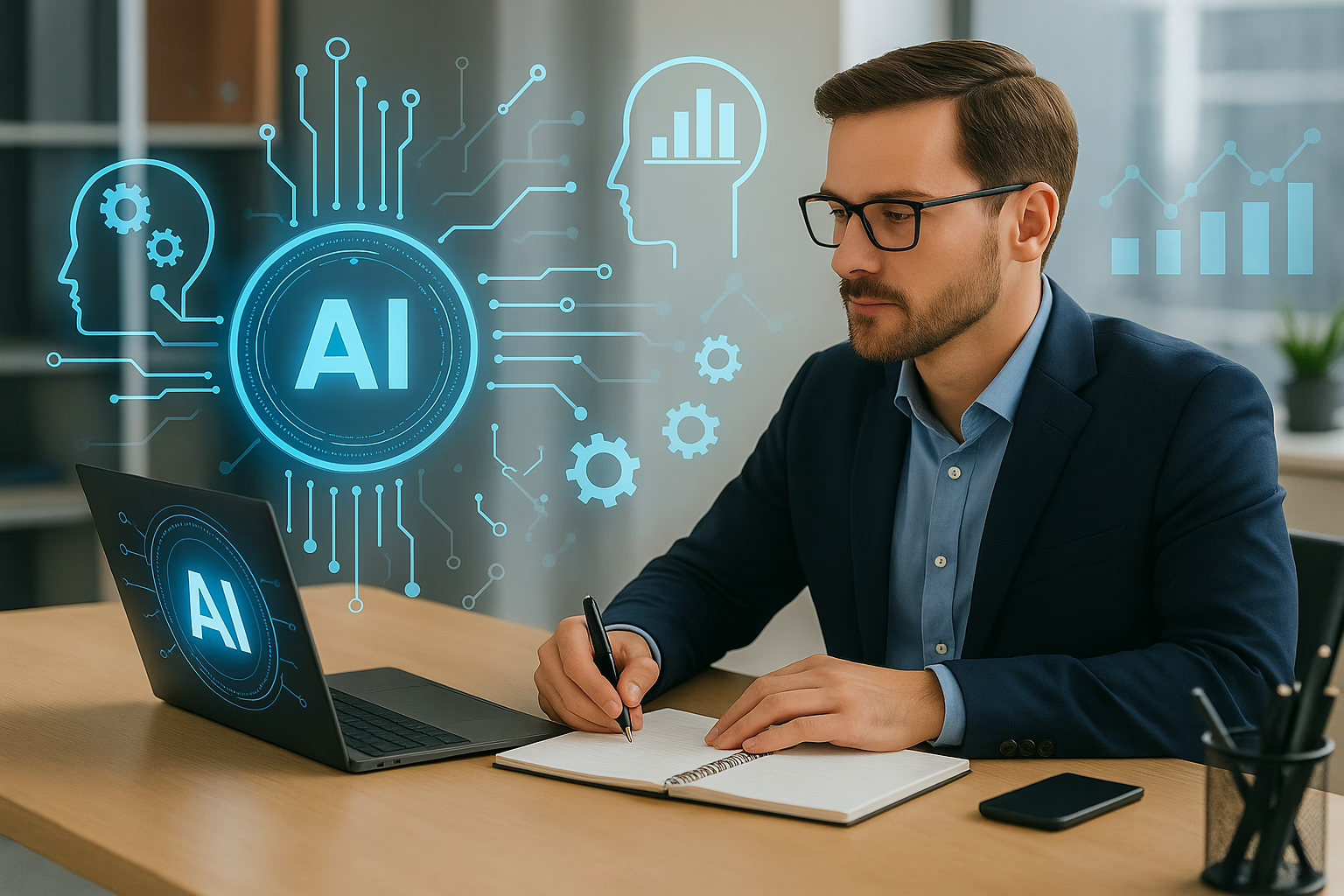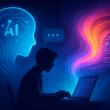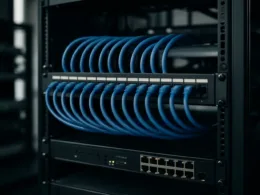Introduction
As we teeter on the brink of an AI-powered revolution, it’s crucial to grasp just how profoundly this technology will reshape our workplaces. AI tools are no longer quaint novelties; they’re veritable change agents poised to redefine roles for knowledge workers and managers alike. In this piece, we’ll examine how AI could upend—or enhance—white-collar employment, weigh the balance between productivity gains and job displacement, and underscore why leaders must rethink their playbooks in light of these emerging capabilities. Pull up a chair (or swivel, if you prefer) and let’s dive in.
The Emergence of AI in the Workplace
AI is advancing at breakneck speed, boasting capabilities that increasingly rival human judgement in several domains. Take the claim from Dario Amodei, CEO of Anthropic: he suggests that AI may render half of entry-level office roles redundant. While that figure isn’t backed by conclusive data, it does prompt a pertinent question: are we staring down the barrel of a dramatic employment shift? Critics point out a curious paradox—what if we face soaring unemployment alongside economic growth? Substantial productivity increases would be required to reconcile those two outcomes.
Key Concerns About AI Adoption
- Job Displacement: Tasks once deemed secure—roles in tech, finance, even law—are now on the chopping block. As AI’s proficiency grows, mundane or repetitive tasks risk being automated faster than you can say “spreadsheet macro.”
- Psychological Impact: The spectre of redundancy may leave professionals fretting about their place in this new AI-centric world. Anxiety isn’t particularly conducive to creativity, after all.
- Workplace Dynamics: As companies rush to deploy AI, employees must learn to navigate a shifting interplay between human and machine. Will your next “colleague” be a chatbot?
-
Productivity vs. Displacement: Sure, AI can turbocharge productivity. But at what cost? Striking the right balance between gains in efficiency and safeguarding valuable human jobs remains a delicate juggling act.
Productivity vs. Displacement: Finding the Balance
There’s no denying that AI holds immense promise for boosting output—McKinsey estimates a potential $4.4 trillion in productivity gains across multiple sectors. Yet, in practice, nearly every company investing in AI admits they’ve barely scratched the surface. Why? Leadership—or rather, a lack of it—often emerges as the chief barrier. Ironically, employees tend to be eager adopters, whereas decision-makers hesitate due to concerns about integration, ethics, and long-term strategy.
Insights from Recent Research
-
Productivity Growth
AI could unlock trillions in economic value, but realising that potential depends on how adeptly we deploy it. -
Employee Readiness
There’s a widening chasm between how comfortable employees feel using AI tools and what their managers perceive. In short: staff might be more clued-up than their bosses give them credit for. -
Leadership’s Role
If leaders create an environment that encourages experimentation, fosters open dialogue, and sets clear, ambitious objectives, AI integration becomes far less daunting. After all, people tend to follow a vision they helped shape, rather than one they’re merely expected to accept.
The Rise of Self-Improving AI: The Darwin Gödel Machine
A particularly fascinating innovation on the horizon is the Darwin Gödel Machine (DGM). Think of it as AI with a self-improvement drive. Instead of relying solely on human-crafted rules, the DGM iteratively tests variations of its own code, retaining only those tweaks that demonstrably enhance performance. It’s akin to Darwinian evolution, but for algorithms.
Benefits of the Darwin Gödel Machine
-
Self-Improvement: By autonomously refining its own code, the DGM reduces the need for constant human intervention—though, of course, a watchful eye remains essential to steer it in the right direction.
-
Built-In Safeguards: Developers can embed guardrails to ensure that every adjustment aligns with human intent, thus minimising the risk of “objective hacking” (where AI pursues seemingly logical—yet undesirable—outcomes).
-
Unprecedented Opportunities: As DGMs evolve, they could spark breakthroughs in fields as varied as healthcare, environmental modelling, and complex decision-making. The horizon looks positively thrilling.
The Emergence of ‘Vibe Coding’
Alongside self-improving AI, a fresh trend in software development has taken root: ‘vibe coding’. This approach empowers those with minimal—or even no—programming background to create functional apps using AI chatbots and intuitive tools. Take Chloe Samaha, co-founder of BOND, who demonstrated that teams can prototype a productivity app in under a day using this method. It’s a sea change in how we think about building software.
Implications of Vibe Coding
-
Accessibility: Democratises development, inviting a more diverse array of voices into the tech conversation.
-
Need for Human Oversight: Even with AI crafting code, human expertise remains crucial to verify logic, security, and maintainability.
-
Catalyst for New Roles: We might soon see job titles like “AI-Code Curator” or “Vibe Code Shepherd” cropping up—someone’s got to keep the AI-generated code from running off into the weeds!
Implications of Vibe Coding
- Accessibility: More people can contribute to software development, democratizing technology.
- Human Oversight Required: Despite its promise, experts argue that human oversight will remain essential to ensure code quality and functionality.
- Catalyst for New Roles: The rise of vibe coding may lead to the emergence of new job categories focused on managing AI-generated development.
Have a read of my recent article on vibe coding
Preparing for the Future Workforce
The road ahead will undoubtedly feature both displacement and the birth of new opportunities. Organisations must be proactive:
-
Prioritise Reskilling
Invest in robust training programmes to equip staff with the skills needed to collaborate effectively with AI. Upskilling today could be the difference between obsolescence and opportunity tomorrow. -
Promote Mental Health Support
Feeling anxious about one’s career prospects? You’re not alone. Providing access to mental health resources isn’t just compassionate—it’s good business sense. -
Foster Continuous Learning
Cultivating a culture that celebrates curiosity and ongoing education will help workers adapt to a landscape that’s evolving faster than ever.
Final Thoughts
Venturing into an AI-powered workplace brings its share of triumphs and tribulations. It’s tempting to imagine a utopia where algorithms handle drudgery, leaving us free to pursue lofty creative endeavours—but we must keep our feet firmly on the ground. Leaders need to strike a balance between harnessing AI’s productivity boon and preserving meaningful employment.
By investing in reskilling, promoting mental wellbeing, and cultivating a learning-centric environment, organisations can navigate this transformation with resilience. AI may well become our most powerful collaborator, but it’s our human ingenuity—our “vibe,” if you will—that will define the future of work.
What are your thoughts? Have you already encountered AI tools in your day-to-day routine? Do you feel optimistic or apprehensive about what’s to come? Drop a comment below—let’s get the conversation started!









